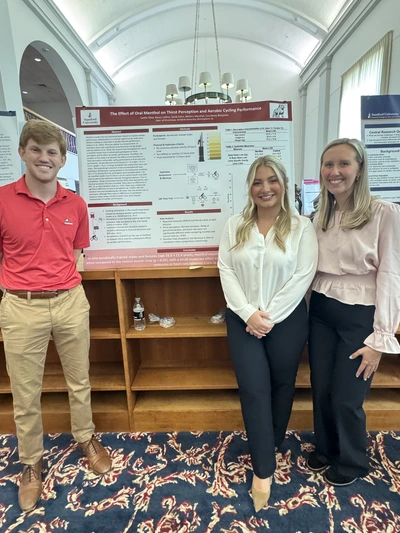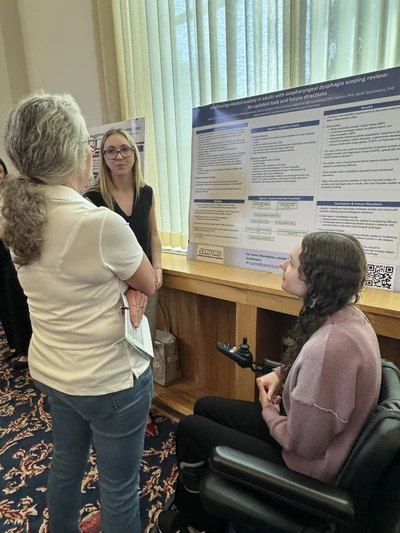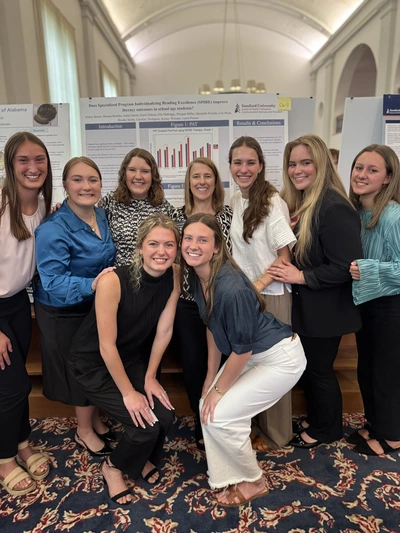
More than 160 undergraduate and graduate students participated in Samford University’s fourth annual Student Research Colloquia on April 25, sharing research and scholarship across disciplines. The event, open to students from all 10 academic schools, reflects three pillars of the university’s strategic plan, Fidelitas: academic distinction, community celebration and student engagement.
Held in Davis Library, this year’s colloquia included 17 student groups from the School of Health Professions with presentations ranging from swallowing-related anxiety to the effects of oral menthol on exercise performance. Three of those groups earned winning presentations.
Representing the Department of Kinesiology, Caitlin Cline, Raney Collins and Jacob Conn studied the effect of oral menthol on thirst perception and aerobic cycling performance under the guidance of assistant professor Courteney Benjamin.
“This award places these students among the best of the best,” Benjamin said. “I’m very proud of all of the work these students put into completing their project and presenting it in a professional and excellent way.”
From the Department of Communication Sciences and Disorders, Katie Eisenhauer, Anna Corinne Galbreath and Mary Ellis Davies conducted a scoping review on swallowing-related anxiety in adults with dysphagia. Their work was mentored by Sarah Szynkiewicz, associate professor, and Kelly Jackson, assistant professor in the same department.

“Working with our undergraduate students on research is a joy and privilege, as is watching their curiosity and critical thinking skills flourish,” Szynkiewicz said. “I am very proud to be a part of their work.”
Another team from the department—Brenna Beucler, Brooke Smith, Caroline Thompson, Ella Mattingly, Kelsey Wimsatt, Lily Prout, Anna Garrett and Morgan Miller—presented a project evaluating whether the Speech-Print Integrated Reading Enhancement (SPIRE) program improves word reading in school-age students. Their research was guided by Laura Promer, assistant professor in the Department of Communication Sciences and Disorders.
“When we empower even the least experienced clinicians with the right tools and support, we unlock the potential for real, measurable change—especially for students who need it most,” Promer said. “This study proves that a small, focused intervention can be a powerful first step toward closing the literacy gap.”

Faculty from across the university judged the poster presentations, looking at how clearly each project stated its purpose, the strength of its methods, the relevance of its findings and its overall contribution to the field. These standards reflect Samford’s focus on thoughtful research and helping students grow in how they share their work.
"Any undergraduate student who designs a research study, submits an application to the Institutional Review Board (IRB) and completes data collection on human participants should be applauded," said Benjamin. “The process is not easy, but this experience is extremely beneficial for our students as they move on to graduate school or the workforce.”
The Student Research Colloquia continues to provide a space for Samford students to engage in meaningful academic inquiry, strengthen faculty collaboration and share ideas with the broader university community.
